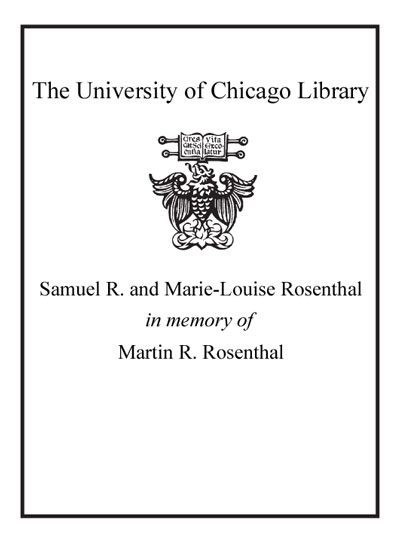Avian malaria parasites and other haemosporidia /
Saved in:
| Author / Creator: | Valkiūnas, G. (Gediminas) |
|---|---|
| Imprint: | Boca Raton : CRC Press, c2005. |
| Description: | x, 932 p. : ill. ; 25 cm. |
| Language: | English |
| Subject: | |
| Format: | E-Resource Print Book |
| URL for this record: | http://pi.lib.uchicago.edu/1001/cat/bib/7134961 |
Table of Contents:
- Preface to the English edition
- Introduction
- General Section
- Brief historical summary
- Life cycle and morphology
- Life cycle and morphology of Haemoproteidae species
- Life cycle and morphology of Plasmodiidae species
- Life cycle and morphology of Garniidae species
- Life cycle and morphology of Leucocytozoidae species
- A brief outline of the ultrastructure
- Sporozoites and merozoites. The peculiarities of their penetration into the host cells
- Trophozoites and meronts
- Gametocytes, gametogenesis, and gametes
- Fertilization, zygote, and initial stages of ookinete development
- Ookinete
- Oocyst and sporogony
- Specificity and general principles of species identification
- Specificity and general principles of the identification of Haemoproteidae species
- Specificity and general principles of the identification of Plasmodiidae and Garniidae species
- Specificity and general principles of the identification of Leucocytozoidae species
- Pathogenicity
- Comparative pathology
- Exoerythrocytic meronts
- Blood stages
- General characteristics of haemosporidioses of domestic birds
- The impact of haemosporidians on wild birds
- Haemosporidioses of wild birds in zoos and aviaries
- Examples of severe pathology and death of wild birds
- Epizooties of haemosporidioses in wild birds in nature
- Influence of haemosporidians on the competitiveness of wild birds in nature
- Influence of haemoproteids on young passerine birds
- Influence of haemoproteids on the accumulation of migratory fat in small passerine birds
- Peculiarities of the infection of irruptive species of passerine birds
- Peculiarities of the distribution of infected birds along flight waves during their autumnal migration
- Influence of haemosporidians on vectors
- Final notes on pathogenicity
- Distribution
- Geographical distribution
- Distribution by hosts
- Ciconiiformes
- Anseriformes
- Falconiformes
- Galliformes
- Gruiformes
- Charadriiformes
- Columbiformes
- Psittaciformes
- Strigiformes
- Caprimulgiformes
- Apodiformes
- Coraciiformes
- Piciformes
- Passeriformes
- Distribution by vectors
- Certain peculiarities of the ecological study of bird parasites
- The influence of migratory behaviour of birds on infection prevalence at a study site
- Sampling bias in netting, trapping, and shooting of birds
- The problem of parasite species identification
- The difficulty of estimating the true prevalence of infection by blood film surveys
- The role of seasonal migrations in the distribution of bird haemosporidians
- Seasonal peculiarities of bird infection
- Age peculiarities of bird infection
- Biotic factors influencing the probability of bird infection
- Haemosporidians as biological tags in bird population studies
- Haemosporidians as objects for analysis in the evolutionary and population biology of birds
- Relapses
- Peculiarities of immunity
- Prevention and treatment
- Taxonomy and classification
- Origin and phylogeny
- Practical importance
- Methods of collection and investigation
- Obtaining of blood from birds and preparation of blood smears
- Staining of blood smears and their examination
- Preparations of gametes, zygotes, and ookinetes
- Preparation of impression smears of birds' organs and tissues
- Preparation of histological sections of birds' organs and tissues
- Infection of birds by subinoculation of infected blood and by sporozoites
- Collection of blood-sucking dipteran insects and their experimental infection
- Laboratory keeping of blood-sucking dipteran insects caught in nature
- Dissection of blood-sucking dipteran insects and making preparations of ookinetes, oocysts, and sporozoites
- Methods of species identification and recommendations for their description
- Main diagnostic characters used for species identification
- Haemoproteidae
- Plasmodiidae
- Garniidae
- Leucocytozoidae
- Methods of species identification
- Main diagnostic characters used for species description
- Systematic Section
- General remarks
- Systematic index of species
- Order Haemosporida
- Family Haemoproteidae
- Genus Haemoproteus
- Subgenus Parahaemoproteus
- Subgenus Haemoproteus
- Family Plasmodiidae
- Genus Plasmodium
- Subgenus Haemamoeba
- Subgenus Giovannolaia
- Subgenus Novyella
- Subgenus Bennettinia
- Subgenus Huffia
- Family Garniidae
- Genus Fallisia
- Subgenus Plasmodioides
- Family Leucocytozoidae
- Genus Leucocytozoon
- Subgenus Leucocytozoon
- Subgenus Akiba
- Appendix 1
- Appendix 2
- References
- Index of Latin names


